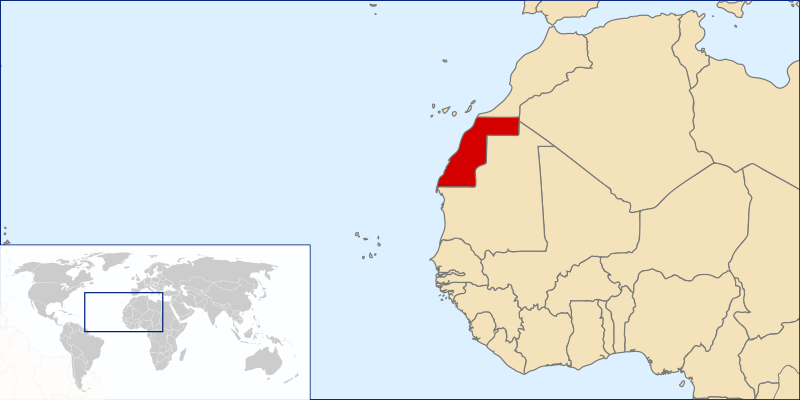Western Sahara (Arabic: الصحراء الغربية, Berber: Taneẓṛuft Tutrimt, Spanish: Sáhara Occidental) is a mostly Moroccan-controlled territory in North Africa, bordered by Morocco to the north, Algeria to the northeast, Mauritania to the east and south, and the Atlantic Ocean to the west.
Its surface area amounts to 266,000 square kilometres (103,000 sq mi). It is one of the most sparsely populated territories in the world, mainly consisting of desert flat lands. The population of the territory is estimated at just over 500,000, over half of which live inLaâyoune, the largest city in Western Sahara.
Western Sahara has been on the United Nations list of non-self-governing territories since the 1960s when it was a Spanish colony. The Kingdom of Morocco and the Algerian-backed Polisario Front separatist movement, with its Sahrawi Arab Democratic Republic (SADR) government in Tindouf (Algeria), dispute control of the territory.
Since a United Nations-sponsored ceasefire agreement in 1991, most of the territory (including the entire Atlantic coast line) has been controlled by Morocco, and the remainder by the Polisario/SADR, strongly backed by Algeria.
Internationally, major powers such as the United States have taken a generally ambiguous and neutral position on each side’s claims, and have pressed both parties to agree on a peaceful resolution. Both Morocco and Polisario have sought to boost their claims by accumulating formal recognition, essentially from African, Asian, and Latin American states in the developing world. Polisario has won formal recognition for SADR from 81 states, and was extended membership in the African Union, while Morocco has won recognition or support for its position from several African governments and from most of the Arab League. In both instances, recognitions have over the past two decades been extended and withdrawn according to changing international trends.
The major ethnic group of the Western Sahara are the Sahrawis, a nomadic or Bedouin tribal or ethnic group speaking the Hassānīya dialect of Arabic, also spoken in much of Mauritania. They are of mixed Arab-Berber descent, but claim descent from the Beni Hassan, a Yemeni tribe supposed to have migrated across the desert in the 11th century.
Physically indistinguishable from the Hassaniya speaking Moors of Mauritania, the Sahrawi people differ from their neighbors partly due to different tribal affiliations (as tribal confederations cut across present modern boundaries) and partly as a consequence of their exposure toSpanish colonial domination. Surrounding territories were generally under French colonial rule.
Like other neighboring Saharan Bedouin and Hassaniya groups, the Sahrawis are Muslims of the Sunni sect and the Maliki fiqh. Local religious custom (‘urf) is, like other Saharan groups, heavily influenced by pre-Islamic Berber and African practices, and differs substantially from urban practices. For example, Sahrawi Islam has traditionally functioned withoutmosques in the normal sense of the word, in an adaptation to nomadic life.
The originally clan- and tribe-based society underwent a massive social upheaval in 1975, when a part of the population was forced into exile and settled in the refugee camps of Tindouf, Algeria. Families were broken up by the fight. For developments among this population, see Sahrawi and Tindouf Province

Notes from Wikipedia








